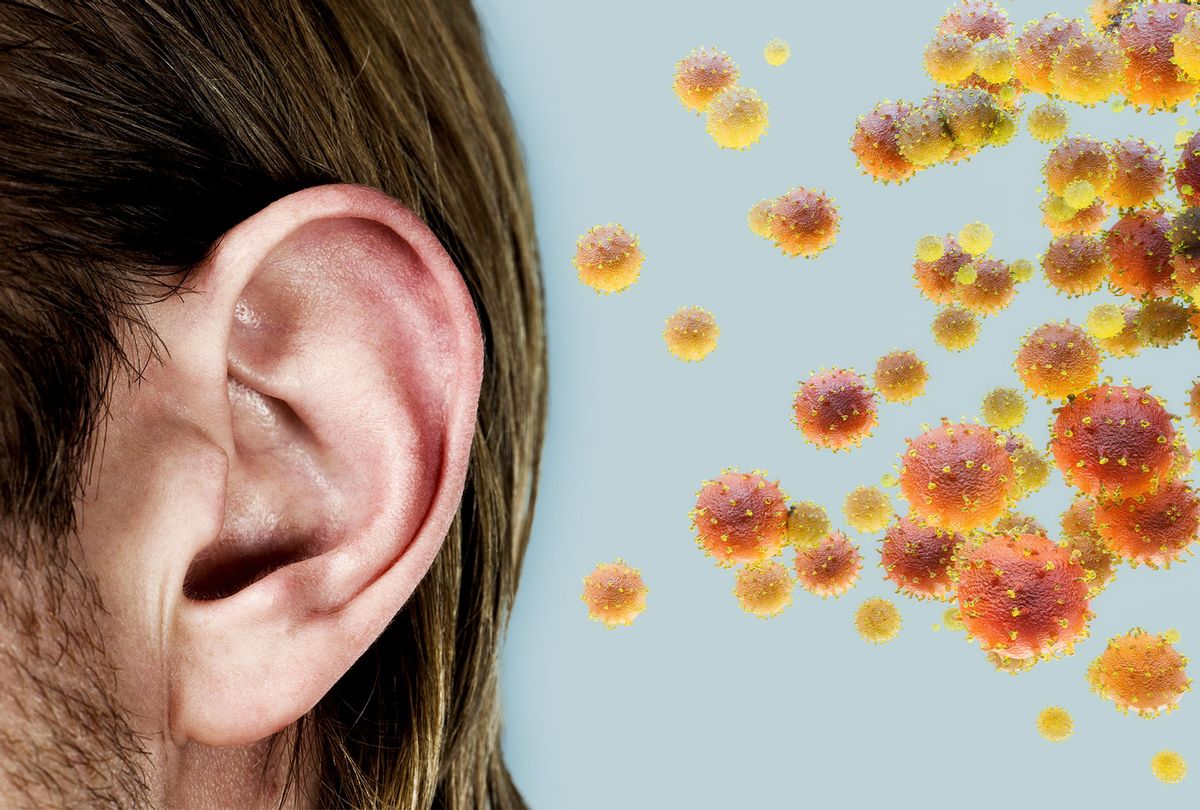As millions more humans contract and recover from COVID-19, doctors and scientists have observed more unexpected chronic conditions resulting from infection. The latest and most peculiar case involves long-term issues with one's ears as a result of COVID-19, a condition that has been informally dubbed "Covid ear." The name mirrors other chronic long-term health issues associated with COVID-19, including Covid Toe.
A new study by researchers from the Massachusetts Institute of Technology (MIT) and Massachusetts Eye and Ear sheds light on Covid ear. As explained in the study's press report, researchers looked at cellular models of the human ear — as well as actual adult human inner ear tissue — which had been developed to study inner ear infections like mumps virus, hepatitis viruses and cytomegalovirus.
After COVID-19 patients began reporting hearing loss, dizziness and tinnitus (ringing of the ears), the scientists applied their earlier research to the SARS-CoV-2 virus, too. They studied how the SARS-CoV-2 virus interacts with inner ear cells like hair cells, nerve fibers, supporting cells and neuron insulators known as Schwann cells. In the process, the scientists learned that the SARS-CoV-2 virus is capable of infecting the hair cells of the inner ear, as well as (to a lesser extent) the Schwann cells.
This may explain why COVID-19 patients experience balance and head motion problems, since the infected hair cells (vestibular) play a role in those processes. It may also account for why some COVID-19 patients lose their hearing; cochlear hair cells (which were not directly studied) also have proteins that allow SARS-CoV-2 to invade them — at least when those cells belong to a close relative of humans, mice. Other tests performed by the researchers on a group of 10 COVID-19 patients also indicated damage to the cochlear hairs.
Want more health and science stories in your inbox? Subscribe to Salon's weekly newsletter The Vulgar Scientist.
"Although evidence that the inner ear is actually infected is still lacking, these findings serve as a strong proof of principle, suggesting that infection of, and subsequent damage to, the hair cells of the inner ear may be behind the hearing and balance issues reported by some COVID-19 patients," scientist William Haseltine wrote about the study in Forbes.
Yuri Agrawal, a professor at Johns Hopkins School of Medicine who was also not involved in the study, told MIT News that "this article provides very compelling evidence that SARS-CoV-2 infects the inner ear, and may be causally related to the hearing and balance symptoms in a number of patients with COVID-19 infection."
Scientists who study inner ear diseases have long been challenged by the difficulty of creating a reliable model; the architecture of the inner ear is such that it is buried under dense bone and burrowed deep into the head, making it difficult to access. As a result, the new study is a step forward when it comes to future research for ear diseases, independent of COVID-19.
This study also comes on the heels of multiple reports regarding COVID-19 affecting organs not normally associated with the illness. A recent article in Scientific American described how COVID-19, though frequently associated with the loss of senses like smell and taste, has also occurred in patients who reported difficulties with hearing and vision. More than 10 percent of confirmed COVID-19 patients describe ear or eye problems, with many of those issues persisting as a form of long COVID. Some doctors have even suggested that people stay alert for symptoms like balance problems, hearing loss and uncomfortable eyes as early signs of COVID-19. An ophthalmologist at the University of Michigan, Shahzad Mian, told the publication that he and his colleagued had documented eye problems in almost 10 percent of the roughly 400 COVID-19 patients hospitalized in their area shortly after the outbreak.

Shares